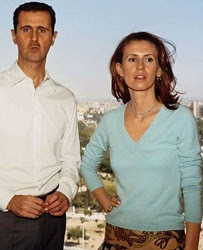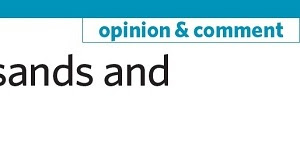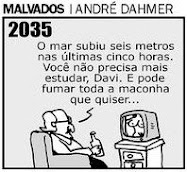Up, Down, Appendices, Postscript.
Eschatological? Ephemeral? E.E.E.E.E.?



 I know it's confusing. This post set out to be about Andrew Weaver and Neil Swart and Colin Goldblatt - climate scientists; and now an economist for good measure, Mark Jaccard; and the ongoing saga of the Wall Street Journal vs what passes for rational thought in k-k-Canada and elsewhere.
I know it's confusing. This post set out to be about Andrew Weaver and Neil Swart and Colin Goldblatt - climate scientists; and now an economist for good measure, Mark Jaccard; and the ongoing saga of the Wall Street Journal vs what passes for rational thought in k-k-Canada and elsewhere.I'll get to it eventually; here you can skip there now if you like.
By a happy chance, Rick Salutin's memoir, The Autobiography of an Idea: Rethinking the Holocaust in light of 9/11, my mentor, and my dad, pointed me at Georgio Agamben:

 A-and following along in Salutin's footsteps I went over to the University of Toronto Bookstore on the streetcar and bought a few titles - one of which is Nudities (for obvious reasons).
A-and following along in Salutin's footsteps I went over to the University of Toronto Bookstore on the streetcar and bought a few titles - one of which is Nudities (for obvious reasons).The book comprises ten essays. They are all seriously thought provoking, witty, hilariously funny at times, profound (don't use that word very often) - and accessible. He appears to have read Augustine & Aquinas, thoroughly - and what he reports makes one wonder about them (even more than before) ... here's a list of the chapters:
§ 1 Creation and Salvation
§ 2 What Is the Contemporary?
§ 3 K.
§ 4 On the Uses and Disadvantages of Living among Specters
§ 5 On What We Can Not Do
§ 6 Identity without the Person
§ 7 Nudity
§ 8 The Glorious Body
§ 9 Hunger of an Ox
§ 10 The Last Chapter in the History of the World
| At the beginning of § 6 Identity without the Person, he says: "The desire to be recognized by others is inseparable from being human. Indeed, such recognition is so essential that, according to |  |
| Hegel, everyone is ready to put his or her own life in jeopardy in order to obtain it. This is not merely a question of satisfaction or self-love; rather, it is | |
| only through recognition by others that man can constitute himself as a person." Which does hearken back to that nameless Australian mentioned here recently. The centrepiece, § 7 Nudity (sections 1-13, sections 14-22, notes), seems to go round and round and round: like Oroborus; like Augustine's nonsense arguments in § 8 The Glorious Body; like a three-way |  |
| Beecroft & Helmut Newton (mentioned before in this blog here & here respectively); and shares a fascination with images of Adam & Eve on the brink. He keeps reminding me of Umberto Eco; witty Italians I guess; a tinge of soi distant, maybe it's a European thing. And, since I am an old whoremonger, I wonder if |  |
The provenance of this photograph is unclear, but the model seems to be a 20 year old English girl called Symmy.]
At some point early on I learned about the word 'vocation' - and since it seemed to me to apply generally I took it up and didn't think much more about it for several decades. Then I discovered from a conservative preacher (a Protestant but not a Baptist) of my acquaintance that systems analysts do not have a vocation, that indeed, those who have the education and are certified to dally in theology look on computers with scorn & on associated 'experts' with contempt.
Oh well. I agreed with him of course, still do.
A few (banal) family snaps of Bashar & Alma al-Assad & some of their kids:



 Bashar al-Assad 1965- (46) & Asma Fawaz al-Akhras 1975- (36), an investment banker ... 'nuf said.
Bashar al-Assad 1965- (46) & Asma Fawaz al-Akhras 1975- (36), an investment banker ... 'nuf said.Adolph Hitler 1889-1945, suicide at 56; Benito Mussolini 1883-1945, executed at 61; Augusto Pinochet 1915-2006, old age while under house arrest at 91; Francisco Franco 1892-1975, old age at 82; Idi Amin 1925-2003, old age while in exile at 75; Pieter Botha 1916-2006, old age at 90; Muammar Gaddafi 1942-2011, killed 'in action' at 69; Joseph Stalin 1878-1953, heart attack at 74.
Life would be simpler if they just had horns and fiery red tails.
OK, climate scientists and controversies and fairmindedness ...
And suddenly there was a host of heavenly headlines:
Canada’s oil sands: Not so dirty after all,
Coal, not oil sands, the true climate change bad guy,
Coal, not oilsands, the true climate change bad guy says study,
Coal, not oilsands, causes global warming: study,
UVic climate scientists examine Alberta oilsands impact,
Coal, not oilsands, the real threat to climate, study finds,
Climate Change: Coal, Not Oilsands The Real Bad Guy Says Study,
Oilsands in perspective.
The list goes on. ... Well ... I began to wonder; especially given the coincidental timing with k-k-Canada's big push to find markets for dirty oil & stifle whatever gets in the way of that push (up to and including the entire European government). But I knew something of Andrew Weaver and I didn't think Stephen Harper would find him quite as easy to buy as, say, a purveyor of Internet robo-calling technology.
But nowhere could I find a copy of the actual report (!) so I took a flyer and emailed Andrew's secretary asking politely for a copy - and very promptly had one.
  |
But, while the report, an opinion piece actually, in Nature Climate Change: The Alberta oil sands and climate (facsimile below), is definitely not a get-out-of-jail-free card, rather the contrary; the net result looks to me to be exactly that. Heartland could hardly have spun it any better.
Here's a late addition from Mark Jaccard: 'You can’t take the tar sands out of the climate equation' (below). He does focus on the spin rather than the substance - but then, he's an economist. In this controversy both spin and substance are important so he is included here for a sort of balance.
Runaway:
In the process Andrew pointed me at Colin Goldblatt, who is challenging Jim Hansen's statements on runaway warming in Storms of my Grandchildren and for one reason and another (all quite reasonable no doubt) climbing onto the geoengineering bandwagon. Colin's (and Andrew Watson's) paper, 'The Runaway Greenhouse: implications for future climate change, geoengineering and planetary atmospheres' is on-line here.
Andrew Weaver seems to agree, he says, "The problem is this fixation on somehow there being a 'runaway' warming feedback. I believe it can be shown to not even be theoretically possible for this to occur." Still and all, in a paper he co-authored, 'Setting cumulative emissions targets to reduce the risk of dangerous climate change', available on-line here, the climate-carbon cycle feedback is taken to be real and positive and it is the strength of it which is unknown and up for discussion - a matter of degree then ... I don't know, probably got my categories all screwed up.
I took up the idea of positive feedback reinforcement of global warming - it's plausible, and I have seen photographs of methane bubbling up in the arctic here and there. The truth is that it is the future and no one really knows exactly what will happen (except maybe Leonard Cohen). The runaway concept did lend poignancy to arguments for the (relatively far-) future Armageddon/Four Horsemen scenario which I happen to subscribe to. But even without runaway, without poignancy, the arguments wash - not as dramatically as imagining the planet Venus with a surface temperature ~1,000°C maybe - but they do wash indeed. And coupled with an hour spent with Ron Plain of Aamjiwnaang, hearing about the 'two girls for every boy' reproductive situation ... well, there are many dimensions to it ... We have to stop burning oil, coal, natural gas - NOW!
Which is, I think, about what Andrew & Neil mean by the last paragraph of their report:
"If North American and international policymakers wish to limit global warming to less than 2°C they will clearly need to put in place measures that ensure a rapid transition of global energy systems to non-greenhouse-gas-emitting sources, while avoiding commitments to new infrastructure supporting dependence on fossil fuels."So.

There is the myth of the Canadian nice-guy - epitomized by Mardi Tindal I'd say, who even three months later still pretends to believe that Peter Kent 'understands the science', and wouldn't call him a lying scumbag if her mouth were full of it (as they say) - and there is the myth of the voter as a rational consumer; and there is the myth of technological can-do (not to even mention Barack Obama and "Yes we can!") ... It's all bollocks. (I was born in Canada and I am categorically & emphatically NOT a nice guy. QED.)
Sometimes I am mistaken for another man with the same name. The other one (or one of the other ones - there are lots of people with this name, it is a veritable Honda Civic of a name) is an editor at The United Church Observer. It happened at an Oikos conference a few years ago - a delightful young woman offered me the use of a private room for interviews should I need it - and the silence on her end when I explained her mistake is ongoing. Oh well.
And I was surprised, very pleasantly, when Andrew Weaver answered me so quickly with a copy of his paper. "Maybe there are still some Canadians worthy of the name in Canada," I thought, "even though he may think I'm someone I'm not." But he did get back to me and we did exchange a few emails; and his colleagues Neil Swart & Colin Goldblatt too; all very forthcoming. This is as it should be in a civil society isn't it? In the old days, when we used physical letters, I had replies to some of my queries from the likes of Donald Coxeter and Barbara Frum - and treasured them.
Just now it took me ten minutes to remember Barbara Frum's name, had to use Google - maybe that's it. Anyway, this little apologia is just to thank the three of them, and express the hope that the outrageous nature of this blog does not entirely put them off such behaviour in the future.






Meanwhile, the Wall Street journal, undeterred by the fiasco of two weeks ago, is at it again. Why? Because it suits them and they know they can get away with it (and I don't mean legally or illegally - ask yourself how they can get away with it). Here, read this and weep: Concerned Scientists Reply on Global Warming (below). And with a nice video of Heartland Institute President Joe Bast
 on why global warming activist Peter Gleick stole and forged documents from his organization.
on why global warming activist Peter Gleick stole and forged documents from his organization.The video of Joe Bast is well worth watching (as long as you have an antidote handy - single malt is good) - Joe Bast is exactly what you would expect him to be.
Here we are again, time to chuck in the kitchen sink & sum up:
 Start with Del Shannon I guess, and a moment to remember the sweet bouncing teenyboppers of yester-year.
Start with Del Shannon I guess, and a moment to remember the sweet bouncing teenyboppers of yester-year.And then Tarot Zero - supposed to be special but I never got it; neither the Tarot nor the importance of the 0'th card - though I pretended to sometimes. "What sign are you?"
Here's one with what appears to be a rabbit (for anyone who is reading carefully).
 Incarnation. Is that the indwelling spirit? Or is that when all that's left is (mere) flesh? I can't remember.
Incarnation. Is that the indwelling spirit? Or is that when all that's left is (mere) flesh? I can't remember.As I am laying down the God stuff - not that I have any answer, just that I am setting it aside for now - at least one of my kids is picking it up. Go figgure - is there a thermodynamic law of conservation of believers then? Is that it? Or is it maybe a phase in a life-cycle? A function of having young children? I don't know.
What's any of this got to do with Moby Dick? Well, the image of Moby Dick above seems to want to conflate with David Blackwood's Fire Down On The Labrador. It's none of Paul's 'principalities and powers and rulers of the darkness' in the KJV, no transcendental daemons, but the huge inertia of natural systems; and by the time Homo grǽdum
  |
I would put a photograph of The Sleeping Giant up in Lake Superior - but I'm sure you've seen it.
My father used to tell this joke: Two little boys are playing near the railroad tracks. One of them climbs up on the fence beside the tracks and is sitting on it when they hear the whistle of a fast-approaching train. The boy on the ground says, "Get down off'a that fence right now, you hear?! That train gonna come along an' suck you right off!" To which the other replies, "C'mon train!"

Or, if it happens to be an Alberta oil-patch little boy, he puts on his cowboy hat and yells, "YEE HAW!" (in bold CAPS).
Be well gentle reader.
Down.
Postscript:
Half-awake, musing on shame and the lack of it (nothing to do with the recent movie of that name) thinking again about Paul wanting to heap coals on the heads of enemies to show your love for them (Romans 12). Except that it doesn't really work! Oh, it works in a Skinner's Box sort of way; in the way of learning not to touch the stove when it's hot. Neither do remorse or forgiveness (except the substantive kind) I don't think ... maybe. Ah ...
I was re-reading this awful mess, fixing typos; and stopped at the 'wonder if he has much experience of prostitutes'. The thing about total depravity, shamelessness, self-abandonment, when it is in the open so to speak, when it is shared - polymorphous & perverse, is that there is still a space in it in which small acts of true affection, love, can ... happen. Of course they can happen anywhere. Hmm ...
Appendices:
1. The Alberta oil sands and climate, Neil Swart & Andrew Weaver, 19 February 2012.
2. Concerned Scientists Reply on Global Warming, WSJ, February 21 2012.
3. You can’t take the tar sands out of the climate equation, Mark Jaccard, February 28 2012.
The Alberta oil sands and climate, Neil Swart & Andrew Weaver, 19 February 2012.


[Note: If you can't read the text use CTRL+ to make it bigger. If you can't read the fine print on the diagrams, click on them to make them bigger. The 'Supplemental Information' mentioned is available on-line at Nature, here.]
Nature Climate Change, Opinion & Comment, Commentary: The Alberta oil sands and climate, by Neil C. Swart & Andrew J. Weaver, 19 February 2012.
The claimed economic benefits of exploiting the vast Alberta oil-sand deposits need to be weighed against the need to limit global warming caused by carbon dioxide emissions.
 The US federal government recently rejected approval for TransCanada’s proposed Keystone XL pipeline. But TransCanada plans to submit a revised proposal shortly. The proposed pipeline is part of a US$13 billion system aimed at connecting the bituminous oil sands in Alberta, Canada with refining capabilities in the United States, including those as far south as Texas1. There has been widespread public interest in, and opposition to the pipeline, primarily owing to environmental concerns.2 Similar public opposition has arisen towards the proposed Northern Gateway pipeline in British Columbia, which aims to make the oil sands accessible to Asian markets.
The US federal government recently rejected approval for TransCanada’s proposed Keystone XL pipeline. But TransCanada plans to submit a revised proposal shortly. The proposed pipeline is part of a US$13 billion system aimed at connecting the bituminous oil sands in Alberta, Canada with refining capabilities in the United States, including those as far south as Texas1. There has been widespread public interest in, and opposition to the pipeline, primarily owing to environmental concerns.2 Similar public opposition has arisen towards the proposed Northern Gateway pipeline in British Columbia, which aims to make the oil sands accessible to Asian markets.The size of the Alberta oil-sand deposits is massive. Estimates for oil-in-place are 1.8 trillion barrels3, although the economically viable ‘proven reserve’ is estimated at only around 170 billion barrels with 26 billion barrels under active development3. For orientation, Alberta’s 1.8 trillion barrels of oil-in-place is roughly seven times the size of Saudi Arabia’s proven reserves4. It has been suggested that construction of the TransCanada pipeline will encourage an expansion of the area under active development2. Indeed, greenhouse-gas emissions resulting from expanding oil-sand production are Canada’s fastest-growing emissions source5, and have the potential to contribute significantly to anthropogenic climate change. This is accentuated by the fact that the oil sands are more energy intensive to produce than conventional crude oil — and have a greater ‘well-to-wheel’ carbon footprint6 (see Supplementary Information).
Global warming
Here we quantify the carbon dioxide-induced potential for global warming contained in the Alberta oil sands in the context of global fossil-fuel resources. To estimate the potential for global warming, we exploit the fact that the carbon dioxide-induced global mean temperature change (ΔT) can be inferred directly from cumulative carbon emissions (ET) by means of the carbon–climate response7, which is equal to ΔT/ET. Observational constraints produce a carbon–climate response of 1.5 °C per trillion metric tonnes of carbon emitted (Tt C), with a range of 1.0–2.1 °C per Tt C (5th–95th percentile). The uncertainty range includes uncertainties in climate sensitivity, as well as uncertainties in ‘carbon sensitivity’ (carbon sinks and carbon–climate feedbacks)7. We estimate the carbon available for emissions from the oil sands based on a per-barrel carbon content multiplied by the number of barrels (see Supplementary Information).
If the entire Alberta oil-sand resource (that is, oil-in-place) were to be used, the associated carbon dioxide emissions would induce a global mean temperature change of roughly 0.36 °C (0.24–0.50 °C; Table 1).
This potential warming is almost half of the observed warming seen in the past 100 years (0.76 °C). However, considering only the economically viable reserve of 170 billion barrels reduces this potential for warming by about tenfold (to 0.02–0.05 °C), and if only the reserve currently under active development were combusted, the warming would be almost undetectable at our significance level.
 Additional emissions resulting from natural gas, diesel and electricity use during bitumen extraction, upgrading and refining have not been included here, but could increase these numbers (see Supplementary Information). Neither have we considered the potential impact of future carbon capture and storage technologies, which may decrease the stated emissions and warming. It is important to recognize that our estimates do not include greenhouse gases other than carbon dioxide and do not address other potentially deleterious environmental, health and social side effects of oil-sand production8 or its potential economic benefits3.
Additional emissions resulting from natural gas, diesel and electricity use during bitumen extraction, upgrading and refining have not been included here, but could increase these numbers (see Supplementary Information). Neither have we considered the potential impact of future carbon capture and storage technologies, which may decrease the stated emissions and warming. It is important to recognize that our estimates do not include greenhouse gases other than carbon dioxide and do not address other potentially deleterious environmental, health and social side effects of oil-sand production8 or its potential economic benefits3.Carbon footprints
To have a 66% chance of limiting warming to less than the 2 °C limit put forth in the 2009 Copenhagen Accord, one carbon–climate modelling study estimated that total future global carbon emissions should be limited to less than 5.9×1017 g C (ref9). If this amount were to be distributed equally among the current global population, the resulting allowable per capita cumulative carbon footprint would be 85 tonnes of carbon. The eventual construction of the Keystone XL pipeline would signify a North American commitment to using the Alberta oil-sand reserve, which carries with it a corresponding carbon footprint. For comparison, by fully using only the proven reserves of the Alberta oil sands, the current populations of the United States and Canada would achieve a per capita cumulative carbon footprint of 64 tonnes of carbon.
The Government of Canada has recently announced its intent also to secure the Chinese market for oil-sand products10, indicating the potential exploitation of this resource regardless of the ultimate fate of the Keystone XL pipeline. If distributed over the current population of China, the proven Alberta oil-sand reserves would lead to a per capita cumulative carbon footprint of 16 tonnes of carbon. However, many other sources of fossil fuels will also be needed if growing Chinese, and indeed worldwide, energy demand is to be met through the exploitation of fossil fuels.
Recent estimates show that an enormous global fossil-fuel total resource base is available to meet this growing demand11 (Table 1). Resources here are defined as those fossil fuels in the Earth’s crust for which “economic extraction is potentially feasible”11 — an upper limit of nature’s bounty and human techno-economic ability. Coal resources have the largest potential for global carbon emissions (79% of the total), followed by unconventional gas (15%) and only then the unconventional oil of which the Alberta oil sands form a part (3%; Fig. 1). Coal’s significance is due to the large tonnage available, together with its high carbon content. It is clear that the total global fossil-fuel resource base could easily yield over 2 °C of warming given sufficient global demand and a lack of international regulation.
If North American and international policymakers wish to limit global warming to less than 2°C they will clearly need to put in place measures that ensure a rapid transition of global energy systems to non-greenhouse-gas-emitting sources, while avoiding commitments to new infrastructure supporting dependence on fossil fuels12.
Neil C. Swart and Andrew J. Weaver are at the School of Earth and Ocean Sciences, University of Victoria, Victoria, British Columbia V8W 3V6, Canada.
e-mail: weaver[at]uvic[dot]ca, ncswart[at]uvic[dot]ca, wlewis[at]uvic[dot]ca
References:
1. TransCanada - Keystone Pipeline Project.
2. Say No to Tar Sands Pipeline: Proposed Keystone XL Project Would Deliver Dirty Fuel at a High Cost, from Natural Resources Defense Council (NRDC), March 2011.
3. Energy Resources Conservation Board ST98–2011 Alberta’s Energy Reserves 2010 and Supply/Demand Outlook 2011–2020 (ERCB, 2011).
4. BP Statistical Review of World Energy (BP, 2011); available at http://www.bp.com/statisticalreview BP Energy Outlook 2030 - Statistical Review, January 2012.
5. Environment Canada National Inventory Report 1990–2009 (Environment Canada, 2011).
6. Charpentier, A. D., Bergerson, J. A. & MacLean, H. L. Environ. Res. Lett. 4, 1–11 (2009).
7. Mathews, H. D., Gillett, N. P., Stott, P. A. & Zickfeld, K. Nature 459, 829–832 (2009).
8. Kelly, E. N. et al. Proc. Natl Acad. Sci. USA 107, 16178–16183 (2010).
9. Zickfeld, K., Eby, M., Matthews, H. D. & Weaver, A. J. Proc. Natl Acad. Sci. USA 106, 16129–16134 (2009).
10. Harper looks to Asian energy markets after Keystone delay, CBC, November 2011.
11. Rogner, H. H. et al. in Global Energy Assessment Ch. 7 (International Institute for Applied Systems Analysis & Cambridge Univ. Press, in the press).
12. Davis, J., Caldeira, K. & Mathews, H. D. Science 329, 1330–1333 (2010).
Additional information:
Supplementary information accompanies this paper on www.nature.com/natureclimatechange (here).
Concerned Scientists Reply on Global Warming, WSJ, February 21 2012.
The authors of the Jan. 27 Wall Street Journal op-ed, 'No Need to Panic about Global Warming,' respond to their critics.
Editor's Note: The authors of the following letter, listed below, are also the signatories of "No Need to Panic About Global Warming," an op-ed that appeared in the Journal on January 27. This letter responds to criticisms of the op-ed made by Kevin Trenberth and 37 others in a letter published Feb. 1, and by Robert Byer of the American Physical Society in a letter published Feb. 6.
The interest generated by our Wall Street Journal op-ed of Jan. 27, "No Need to Panic about Global Warming," is gratifying but so extensive that we will limit our response to the letter to the editor the Journal published on Feb. 1, 2012 by Kevin Trenberth and 37 other signatories, and to the Feb. 6 letter by Robert Byer, President of the American Physical Society. (We, of course, thank the writers of supportive letters.)
We agree with Mr. Trenberth et al. that expertise is important in medical care, as it is in any matter of importance to humans or our environment. Consider then that by eliminating fossil fuels, the recipient of medical care (all of us) is being asked to submit to what amounts to an economic heart transplant. According to most patient bills of rights, the patient has a strong say in the treatment decision. Natural questions from the patient are whether a heart transplant is really needed, and how successful the diagnostic team has been in the past.
In this respect, an important gauge of scientific expertise is the ability to make successful predictions. When predictions fail, we say the theory is "falsified" and we should look for the reasons for the failure. Shown in the nearby graph is the measured annual temperature of the earth since 1989, just before the first report of the Intergovernmental Panel on Climate Change (IPCC). Also shown are the projections of the likely increase of temperature, as published in the Summaries of each of the four IPCC reports, the first in the year 1990 and the last in the year 2007.
These projections were based on IPCC computer models of how increased atmospheric CO2 should warm the earth. Some of the models predict higher or lower rates of warming, but the projections shown in the graph and their extensions into the distant future are the basis of most studies of environmental effects and mitigation policy options. Year-to-year fluctuations and discrepancies are unimportant; longer-term trends are significant.
From the graph it appears that the projections exaggerate, substantially, the response of the earth's temperature to CO2 which increased by about 11% from 1989 through 2011. Furthermore, when one examines the historical temperature record throughout the 20th century and into the 21st, the data strongly suggest a much lower CO2 effect than almost all models calculate.
The Trenberth letter tells us that "computer models have recently shown that during periods when there is a smaller increase of surface temperatures, warming is occurring elsewhere in the climate system, typically in the deep ocean." The ARGO system of diving buoys is providing increasingly reliable data on the temperature of the upper layers of the ocean, where much of any heat from global warming must reside. But much like the surface temperature shown in the graph, the heat content of the upper layers of the world's oceans is not increasing nearly as fast as IPCC models predict, perhaps not increasing at all. Why should we now believe exaggerating IPCC models that tell us of "missing heat" hiding in the one place where it cannot yet be reliably measured—the deep ocean?
Given this dubious track record of prediction, it is entirely reasonable to ask for a second opinion. We have offered ours. With apologies for any immodesty, we all have enjoyed distinguished careers in climate science or in key science and engineering disciplines (such as physics, aeronautics, geology, biology, forecasting) on which climate science is based.
Trenberth et al. tell us that the managements of major national academies of science have said that "the science is clear, the world is heating up and humans are primarily responsible." Apparently every generation of humanity needs to relearn that Mother Nature tells us what the science is, not authoritarian academy bureaucrats or computer models.
One reason to be on guard, as we explained in our original op-ed, is that motives other than objective science are at work in much of the scientific establishment. All of us are members of major academies and scientific societies, but we urge Journal readers not to depend on pompous academy pronouncements—on what we say—but to follow the motto of the Royal Society of Great Britain, one of the oldest learned societies in the world: nullius in verba—take nobody's word for it. As we said in our op-ed, everyone should look at certain stubborn facts that don't fit the theory espoused in the Trenberth letter, for example—the graph of surface temperature above, and similar data for the temperature of the lower atmosphere and the upper oceans.
What are we to make of the letter's claim: "Climate experts know that the long-term warming trend has not abated in the past decade. In fact, it was the warmest decade on record." We don't see any warming trend after the year 2000 in the graph. It is true that the years 2000-2010 were perhaps 0.2 C warmer than the preceding 10 years. But the record indicates that long before CO2 concentrations of the atmosphere began to increase, the earth began to warm in fits and starts at the end of the Little Ice Age—hundreds of years ago. This long term-trend is quite likely to produce several warm years in a row. The question is how much of the warming comes from CO2 and how much is due to other, both natural and anthropogenic, factors?
There have been many times in the past when there were warmer decades. It may have been warmer in medieval times, when the Vikings settled Greenland, and when wine was exported from England. Many proxy indicators show that the Medieval Warming was global in extent. And there were even warmer periods a few thousand years ago during the Holocene Climate Optimum. The fact is that there are very powerful influences on the earth's climate that have nothing to do with human-generated CO2. The graph strongly suggests that the IPCC has greatly underestimated the natural sources of warming (and cooling) and has greatly exaggerated the warming from CO2.
The Trenberth letter states: "Research shows that more than 97% of scientists actively publishing in the field agree that climate change is real and human caused." However, the claim of 97% support is deceptive. The surveys contained trivial polling questions that even we would agree with. Thus, these surveys find that large majorities agree that temperatures have increased since 1800 and that human activities have some impact.
But what is being disputed is the size and nature of the human contribution to global warming. To claim, as the Trenberth letter apparently does, that disputing this constitutes "extreme views that are out of step with nearly every other climate expert" is peculiar indeed.
One might infer from the Trenberth letter that scientific facts are determined by majority vote. Some postmodern philosophers have made such claims. But scientific facts come from observations, experiments and careful analysis, not from the near-unanimous vote of some group of people.
The continued efforts of the climate establishment to eliminate "extreme views" can acquire a seriously threatening nature when efforts are directed at silencing scientific opposition. In our op-ed we mentioned the campaign circa 2003 to have Dr. Chris de Freitas removed not only from his position as editor of the journal Climate Research, but from his university job as well. Much of that campaign is documented in Climategate emails, where one of the signatories of the Trenberth et al. letter writes: "I believe that a boycott against publishing, reviewing for, or even citing articles from Climate Research [then edited by Dr. de Freitas] is certainly warranted, but perhaps the minimum action that should be taken."
Or consider the resignation last year of Wolfgang Wagner, editor-in-chief of the journal Remote Sensing. In a fulsome resignation editorial eerily reminiscent of past recantations by political and religious heretics, Mr. Wagner confessed to his "sin" of publishing a properly peer-reviewed paper by University of Alabama scientists Roy Spencer and William Braswell containing the finding that IPCC models exaggerate the warming caused by increasing CO2.
The Trenberth letter tells us that decarbonization of the world's economy would "drive decades of economic growth." This is not a scientific statement nor is there evidence it is true. A premature global-scale transition from hydrocarbon fuels would require massive government intervention to support the deployment of more expensive energy technology. If there were economic advantages to investing in technology that depends on taxpayer support, companies like Beacon Power, Evergreen Solar, Solar Millenium, SpectraWatt, Solyndra, Ener1 and the Renewable Energy Development Corporation would be prospering instead of filing for bankruptcy in only the past few months.
The European experience with green technologies has also been discouraging. A study found that every new "green job" in Spain destroyed more than two existing jobs and diverted capital that would have created new jobs elsewhere in the economy. More recently, European governments have been cutting subsidies for expensive CO2-emissionless energy technologies, not what one would expect if such subsidies were stimulating otherwise languid economies. And as we pointed out in our op-ed, it is unlikely that there will be any environmental benefit from the reduced CO2 emissions associated with green technologies, which are based on the demonization of CO2.
Turning to the letter of the president of the American Physical Society (APS), Robert Byer, we read, "The statement [on climate] does not declare, as the signatories of the letter [our op-ed] suggest, that the human contribution to climate change is incontrovertible." This seems to suggest that APS does not in fact consider the science on this key question to be settled.
Yet here is the critical paragraph from the statement that caused the resignation of Nobel laureate Ivar Giaever and many other long-time members of the APS: "The evidence is incontrovertible: Global warming is occurring. If no mitigating actions are taken, significant disruptions in the Earth's physical and ecological systems, social systems, security and human health are likely to occur. We must reduce emissions of greenhouse gases beginning now." No reasonable person can read this and avoid the conclusion that APS is declaring the human impact "incontrovertible." Otherwise there would be no logical link from "global warming" to the shrill call for mitigation.
The APS response to the concerns of its membership was better than that of any other scientific society, but it was not democratic. The management of APS took months to review the statement quoted above, and it eventually declared that not a word needed to be changed, though some 750 words were added to try to explain what the original 157 words really meant. APS members were permitted to send in comments but the comments were never made public.
In spite of the obstinacy of some in APS management, APS members of good will are supporting the establishment of a politics-free, climate physics study group within the Society. If successful, it will facilitate much needed discussion, debate, and independent research in the physics of climate.
In summary, science progresses by testing predictions against real world data obtained from direct observations and rigorous experiments. The stakes in the global-warming debate are much too high to ignore this observational evidence and declare the science settled. Though there are many more scientists who are extremely well qualified and have reached the same conclusions we have, we stress again that science is not a democratic exercise and our conclusions must be based on observational evidence.
The computer-model predictions of alarming global warming have seriously exaggerated the warming by CO2 and have underestimated other causes. Since CO2 is not a pollutant but a substantial benefit to agriculture, and since its warming potential has been greatly exaggerated, it is time for the world to rethink its frenzied pursuit of decarbonization at any cost.
Claude Allegre, former director of the Institute for the Study of the Earth, University of Paris; J. Scott Armstrong, cofounder of the Journal of Forecasting and the International Journal of Forecasting; Jan Breslow, head of the Laboratory of Biochemical Genetics and Metabolism, Rockefeller University; Roger Cohen, fellow, American Physical Society; Edward David, member, National Academy of Engineering and National Academy of Sciences; William Happer, professor of physics, Princeton; Michael Kelly, professor of technology, University of Cambridge, U.K.; William Kininmonth, former head of climate research at the Australian Bureau of Meteorology; Richard Lindzen, professor of atmospheric sciences, MIT; James McGrath, professor of chemistry, Virginia Technical University; Rodney Nichols, former president and CEO of the New York Academy of Sciences; Burt Rutan, aerospace engineer, designer of Voyager and SpaceShipOne; Harrison H. Schmitt, Apollo 17 astronaut and former U.S. senator; Nir Shaviv, professor of astrophysics, Hebrew University, Jerusalem; Henk Tennekes, former director, Royal Dutch Meteorological Service; Antoninio Zichichi, president of the World Federation of Scientists, Geneva.
You can’t take the tar sands out of the climate equation, Mark Jaccard, February 28 2012.
Andrew Weaver and Neil Swart of the University of Victoria are surely about to receive a major award from the Canadian Association of Petroleum Producers (CAPP), the Alberta government and even the Canadian government for their just-released paper in Nature on the potential contribution of Alberta tar sands to global warming.
Their conclusion is that combustion of all the oil in the tar sands would not cause more than a 0.36 degree Celsius increase in average global temperatures – while scientists and political leaders agree that we can’t allow temperatures to increase more than two degrees.
CAPP and the Alberta government must be ecstatic with the research of Dr. Weaver and Mr. Swart because it echoes the message they’ve been propagating for decades, joined more recently by the Harper government. The basic message is that stopping tar sands will not prevent climate change. And the implicit conclusion is that we should go ahead and develop the tar sands, since it really isn’t critical to solving the problem.
Every year, one of the projects I give my students is to figure out how the global community can address the climate risk, given that it requires concerted global action, that some countries cause more emissions per capita than others, that some are endowed with abundant fossil fuel resources, and that some are richer than others. The students must also address the fact that the energy system is complex in that emissions reductions take time as we renew factories, buildings and vehicles, and that costs differ depending on energy forms (fossil fuels, renewables) and energy uses (electricity generation, transportation, buildings).
But every year, they produce the same answer: Action must begin immediately, rich countries must go first and poorer, lower emission countries must soon follow, even if tariffs are required to ensure compliance. And given current emission levels, they point out, emissions must be falling now in all sectors of the economy, although this may happen faster in some sectors than others, depending on relative costs of decarbonizing.
I also ask the students to address CAPP’s argument that tar sands development doesn’t matter. Since some of the students have studied philosophy, they say this argument is a variation of the “fallacy of composition.” This fallacy involves inferring that, since an individual component on its own is not a problem, then it isn’t part of a problem that exists when all components are added together.
Dr. Weaver and Mr. Swart are climate modellers. If they had consulted any of the world-leading independent energy-economy modellers at MIT, University of Maryland, Berlin, Vienna or Stanford, they would have done a different study by looking at combined sets of reductions around the world, and recognizing that all components currently or potentially in use are part of the solution.
What researchers who do this consistently find is that it’s already too late to prevent a two-degree increase because of the inertia in our global energy system, which is 85 per cent based on burning coal, oil and natural gas. We would have to blow up our factories, electricity plants and vehicles to achieve that goal.
They also show that, even if we just hope to keep the increase below four degrees, then we can’t allow any expansion of the tar sands, and certainly no new pipelines such as Keystone and Northern Gateway to support any expanded use of fossil fuels. An example is the recent 20-page report from MIT’s Joint Program on the Science and Policy of Global Change, Canada’s Bitumen Industry Under CO2 Constraints (http://globalchange.mit.edu). The report shows how and why the Canadian tar sands must contract immediately as part of a global effort to prevent a four-degree increase in temperature and catastrophic climate change.
Ironically, the Harper government recognized this when, in 2007, it promised to reduce Canada’s greenhouse-gas emissions 65 per cent by 2050. The MIT study incorporates this promise into its analysis, again confirming that tar sands must start contracting now. Even Stephen Harper’s hand-picked National Round Table on the Environment and the Economy came to the same conclusion when it studied his target, in the report Achieving 2050. It showed that Canadian emissions must start falling immediately, including emissions associated with tar sands. In essence, we need to be moving now to switch our transportation system to zero-emission energy and, fortunately, we now have commercial technologies and fuels to achieve this.
Usually, CAPP and its allied governments have to pay for someone to propagate the fallacy of composition in order to justify a continuation of fossil fuel profiteering in Canada at the planet’s expense. For once, they get it for free.
Mark Jaccard is a professor at Simon Fraser University and lead author for sustainable energy policy in the coming Global Energy Assessment.
Down.























